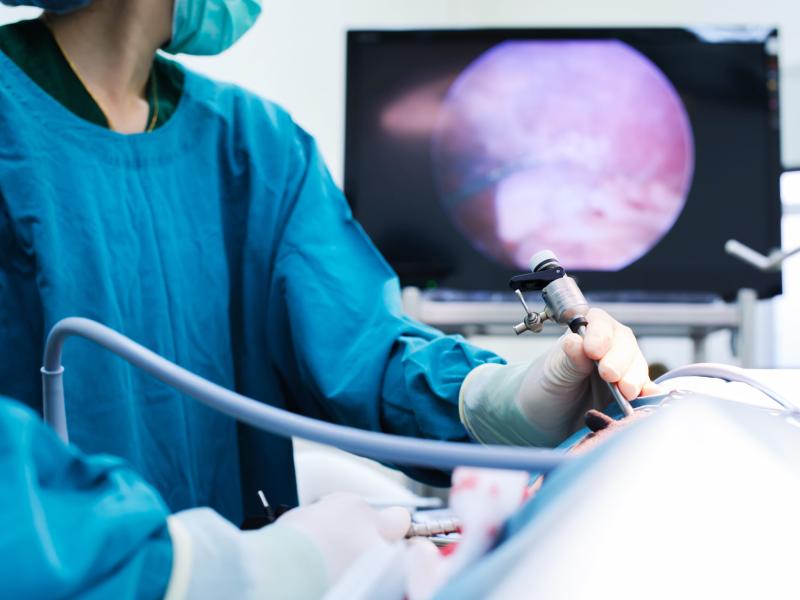Uterine disorders surgery is a delicate choice for women aiming to preserve their fertility. Depending on the diagnosis made, doctors can suggest the most appropriate treatment for the problem in question. Proposed interventions, such as myomectomy and hysterectomy, will enable the patient to have pregnancy or may facilitate the process of medically assisted procreation.
Uterine disorders and fertility
The uterus, the essential organ of the female reproductive system, can be affected by a variety of pathologies. These vary in severity, and can impact fertility and even alter a woman's general health and quality of life. From common problems such as fibroids to more complex conditions such as endometriosis or adenomyosis, understanding these uterine conditions is crucial. In fact, prescribing specific examinations helps in the early detection of disease, as well as in choosing the right treatment.
Types and symptoms of uterine disorders
Understanding the type of uterine affection enables the doctor to detect the anomaly at an early stage, and then decide the most appropriate treatment. Among the most widespread anomalies are fibroids, also known as uterine leiomyomas. These benign tumors develop in the muscular wall of the uterus and can vary in size and number.
Other conditions can arise when tissues similar to the uterine lining develop outside the uterus. This is endometriosis, which often affects the ovaries, fallopian tubes or other pelvic organs. If the endometrial tissue develops in the muscular wall of the uterus, then it's called adenomyosis, and in its advanced stages can lead to uterine hypertrophy.
Generally, each of these uterine disorders has its own symptoms, although some may be common, such as :
- Heavy menstrual bleeding (menorrhagia)
- Pelvic pain or pressure
- Painful periods (dysmenorrhea)
Anomalies influence on procreation
In most cases, abnormalities are a hindrance to pregnancy, especially in the case of fibroids. Because of their large size, they cause deformation of the uterine cavity, preventing implantation of the egg as causing the “infertility effect”.
Similarly, changes in the shape and function of the female reproductive organs caused by endometriosis can also lead to fertility problems. This minimizes the chances of becoming pregnant, due to the low ovarian reserve.
For women suffering from adenomyosis, miscarriages can occur. However, it should be noted that all the above-mentioned conditions are likely to cause infertility when they reach an advanced stage. This necessitates recourse to one of the uterine surgeries, as myomectomy and hysterectomy.
How to preserve fertility with myomectomy?
When it comes to uterine treatment options, fertility preservation is a crucial consideration for many women. In this regard, myomectomy appears to be a viable alternative to uterine removal surgery. Indeed, myomectomy involves the surgical removal of fibroids while retaining the uterus, making it an ideal choice for those wishing to conceive in the future.
The procedure also enables women with uterine disorders to undergo medically assisted reproduction (MAP) technologies such as in vitro fertilization (IVF).
To preserve fertility, myomectomy is highly recommended in order to treat hormonal imbalances and early menopause. To achieve this, the gynecologist can use a variety of hysteroscopic, laparoscopic or abdominal techniques.
Hysterectomy and infertility
Hysterectomy is the surgical removal of the uterus and other organs, such as the fallopian tubes and ovaries, if necessary. It is a common option for the treatment of a variety of conditions, such as :
- Cancer of the uterine organs
- Fibroids
- Adenomyosis
Although hysterectomy effectively resolves these problems, it also prevents women from conceiving naturally. So, in order to preserve fertility, exploration of less invasive alternatives, such as myomectomy or other minimally invasive techniques, becomes paramount.
Nevertheless, for women who no longer have any plans for a future pregnancy, uterine ablation may be an appropriate choice. However, thorough consultations with healthcare providers are essential. This enables them to align with the patient's personal preferences while ensuring her safety.
Myomectomy vs. hysterectomy: What are the differences?
When it comes to treating uterine conditions, women are often faced with a choice between the two surgical procedures: myomectomy and hysterectomy.
Understanding the differences between these treatments is important before making an informed choice.
|
Treatment |
Description |
Advantages |
Considerations |
|
Myomectomy |
- Removes uterine fibroids while preserving the organ
- Recommended for preserving fertility or keeping the uterus for personal/cultural reasons |
- Relieves heavy menstrual bleeding and pelvic pain caused by fibroids -Maintains reproductive potential |
- Specific intervention for a condition
-Possibility of fibroid recurrence |
|
Hysterectomy |
-Complete removal of the uterus, including fibroids if present
- A definitive treatment for uterine conditions |
-Eliminates fibroids and resolves symptoms
- Permanent solution for uterine issues |
-Loss of the reproductive organ
- Not reversible |






